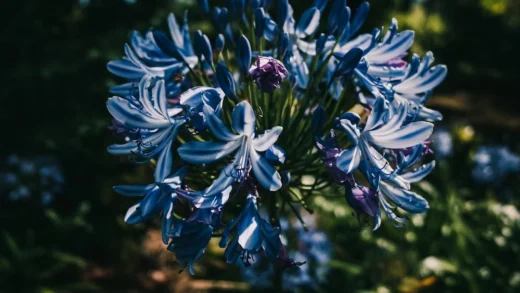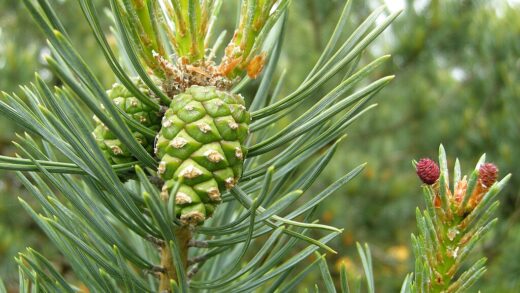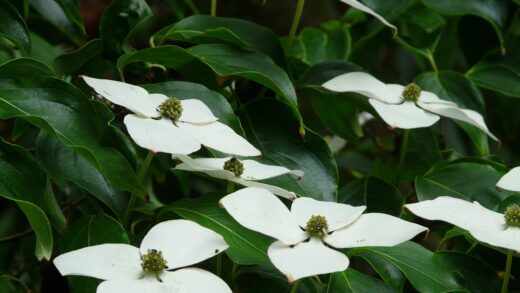Pruning is an essential and multifaceted aspect of rosemary cultivation, serving purposes that extend far beyond simple maintenance. It is a critical practice for encouraging a dense and bushy habit, maintaining a desirable size and shape, promoting the health of the plant, and ensuring a bountiful supply of aromatic sprigs for culinary use. A well-executed pruning strategy, timed correctly and performed with the right technique, will result in a plant that is not only more aesthetically pleasing but also more vigorous and productive. Understanding when and how to prune is key to harnessing the plant’s natural growth patterns to create a beautiful and long-lived shrub.
The purposes of pruning
The primary purpose of pruning rosemary is to encourage dense, bushy growth. Rosemary has a natural tendency to become woody and leggy over time, with foliage concentrated at the ends of long, bare stems. Regular trimming, even the simple act of harvesting stems for cooking, stimulates the plant to branch out from the points where it was cut. This process, repeated over time, is what creates the full, compact shape that is so desirable in a rosemary shrub. Without this regular encouragement, the plant will become sparse and unattractive.
A second key purpose of pruning is to control the plant’s size and maintain its shape. Depending on the cultivar, rosemary can grow into a very large shrub, and in a garden setting, it may need to be kept within certain bounds to prevent it from overwhelming neighboring plants. Pruning allows a gardener to manage the overall height and spread of the plant, whether it is being maintained as a formal hedge, a topiary, or a more natural-looking mound. This structural pruning is essential for integrating the plant harmoniously into the garden design.
Pruning also plays a vital role in the health of the plant. The removal of any dead, damaged, or diseased wood is a fundamental aspect of garden hygiene. These non-productive branches can be entry points for pathogens and pests. By cutting them out, a gardener not only improves the plant’s appearance but also reduces the risk of future health problems. Furthermore, selective thinning of the interior branches can significantly improve air circulation through the plant, which is one of the most effective ways to prevent fungal diseases like powdery mildew from taking hold.
Finally, pruning is intrinsically linked to harvesting. Every time a sprig of rosemary is cut for the kitchen, a pruning act has been performed. Regular harvesting of the young, tender tips is the best way to ensure a continuous supply of the most flavorful and aromatic foliage. This light, frequent trimming is the gentlest and most effective way to keep the plant productive and well-shaped simultaneously, aligning the gardener’s culinary needs with the horticultural needs of the plant.
The best time to prune
Timing is a critical factor in a successful pruning strategy for rosemary. The best time for most pruning activities is in the spring, after the plant has finished its main flowering cycle. Pruning at this time allows the plant the entire active growing season of summer to recover and put on a flush of new growth. The cuts will heal quickly, and the plant will respond with vigorous branching, which will have ample time to mature and harden off before the arrival of cooler autumn weather.
Light trimming and harvesting can, and should, be done throughout the spring and summer. Snipping off the top few inches of a stem for cooking is a beneficial form of pruning that can be performed at any time during the active growing season. This continuous, light pruning consistently encourages the plant to become bushier. However, one should avoid harvesting too heavily at any single time, as this can stress the plant. A good guideline is to never remove more than a quarter to a third of the plant’s total foliage at once.
It is very important to avoid any heavy pruning in the late autumn or winter. Making significant cuts late in the season can stimulate the plant to produce new, tender growth. This new foliage will not have sufficient time to mature and harden before the first frosts arrive, making it extremely vulnerable to cold damage. This damage can then travel down the stem, potentially harming or even killing larger, more established parts of the plant. All major shaping and size reduction should be completed by late summer at the latest.
The only type of pruning that is acceptable during the autumn and winter is the removal of any branches that are clearly dead, diseased, or have been damaged by wind or snow. This is a matter of sanitation and can be done at any time of year as soon as the problem is noticed. This type of corrective pruning does not stimulate new growth and helps to keep the plant healthy as it enters its dormant period.
Pruning techniques
The technique used for pruning depends on the desired outcome. For general maintenance and to encourage bushiness, the focus should be on trimming the soft, green stems. The cuts should be made about a quarter-inch above a leaf node (the point where a leaf or set of leaves joins the stem). Making the cut here will encourage the plant to send out two new branches from just below that point, which is how the plant becomes denser over time.
When performing a more substantial pruning for size reduction or shaping, it is crucial to follow the “one-third” rule: never remove more than one-third of the plant’s overall mass in a single year. A more aggressive cutback can be a significant shock to the plant’s system from which it may not recover. If a plant is severely overgrown, it is much safer to renovate it gradually over two or three years, reducing its size by a third each spring, rather than attempting to do it all at once.
One of the most important rules of rosemary pruning is to avoid cutting back into the old, bare wood at the base of the plant. Unlike many other shrubs, rosemary generally does not possess dormant buds on its old wood and will not regenerate new growth from these areas. Any cuts should be made on the green, leafy parts of the stems. If a branch is cut back to a point where there are no leaves, that branch will likely die back completely. This is a critical consideration when trying to rejuvenate an old, woody plant.
The proper tools are also essential for clean and effective pruning. For the soft, green tips, a pair of sharp scissors or floral snips is perfectly adequate. For thicker, woodier stems, a pair of clean and sharp bypass pruners should be used. Bypass pruners make a clean cut without crushing the plant’s tissues, which helps the wound to heal more quickly and reduces the risk of infection. The tools should always be sterilized with rubbing alcohol before and after use, especially if any diseased wood is being removed.
Rejuvenating an old plant
Over time, despite best efforts, a rosemary plant can become large, woody, and sparse, with most of its foliage concentrated on the outer edges. While tempting, a drastic cutback into the old wood is not the answer and will likely kill the plant. The process of rejuvenating an old, woody rosemary must be done carefully and gradually over a period of two to three years. The goal is to encourage new growth from the lower parts of the plant without removing all of its current foliage-producing capacity.
The process begins in the spring. Identify several of the oldest, woodiest stems and trace them back to their origin point or to a point where there is some younger, leafy side growth. Cut these selected stems back, either to the side growth or by removing them entirely if they are unproductive. This will open up the center of the plant to more light and air, which can sometimes encourage new shoots to emerge from the base or from lower down on the remaining stems.
This selective removal of the oldest stems should be repeated each spring. In the second and third years, target a different set of old, woody stems for removal. Throughout this process, it is important to continue to lightly prune the younger, green growth on the remaining parts of the plant to encourage them to become bushier. This combination of removing old wood and shaping new wood will gradually replace the old, tired structure of the plant with a new, more vigorous framework.
Patience is the key to this process. It is a slow and methodical renovation, not a quick fix. There is no guarantee of success, especially with very old and neglected plants, but this gradual approach offers the best chance of bringing an old rosemary back to a more attractive and productive state. It works with the plant’s natural growth habits rather than against them, giving it time to respond and regenerate at a sustainable pace.
Pruning for specific shapes
Rosemary lends itself well to being pruned into specific shapes, a practice known as topiary. Common forms include standards (a “ball on a stick” shape), cones, or spheres. Creating these shapes requires frequent and meticulous pruning, beginning when the plant is young. The process is one of constant light trimming to guide the plant’s growth into the desired form. It is a long-term project that demands consistent attention throughout the growing season.
To create a rosemary standard, one must select a young plant with a single, strong, straight central stem. All the side branches along the bottom portion of this stem are removed, and only the growth at the very top is allowed to remain. This top growth is then regularly pinched and trimmed to encourage it to form a dense, spherical “head.” The main stem may need to be staked to keep it perfectly straight as it thickens and becomes the “trunk” of the standard.
For geometric shapes like cones or spheres, the pruning process involves regular shearing of the outer foliage during the spring and summer. This is similar to how a formal hedge is maintained. The initial rough shape is established, and then frequent light trimmings are used to fill in any gaps and refine the lines of the shape. A topiary frame can be a useful guide in the early stages of training.
It is important to remember that maintaining a formal topiary shape is a high-maintenance endeavor. The plant will constantly be trying to grow out of its constrained form, requiring trimming every few weeks during the growing season. While the results can be stunningly beautiful, a gardener must be prepared to commit to the regular pruning that is necessary to keep the shape well-defined and tidy. This intensive pruning also means the plant may require slightly more water and a very light feeding to support the constant new growth.




















